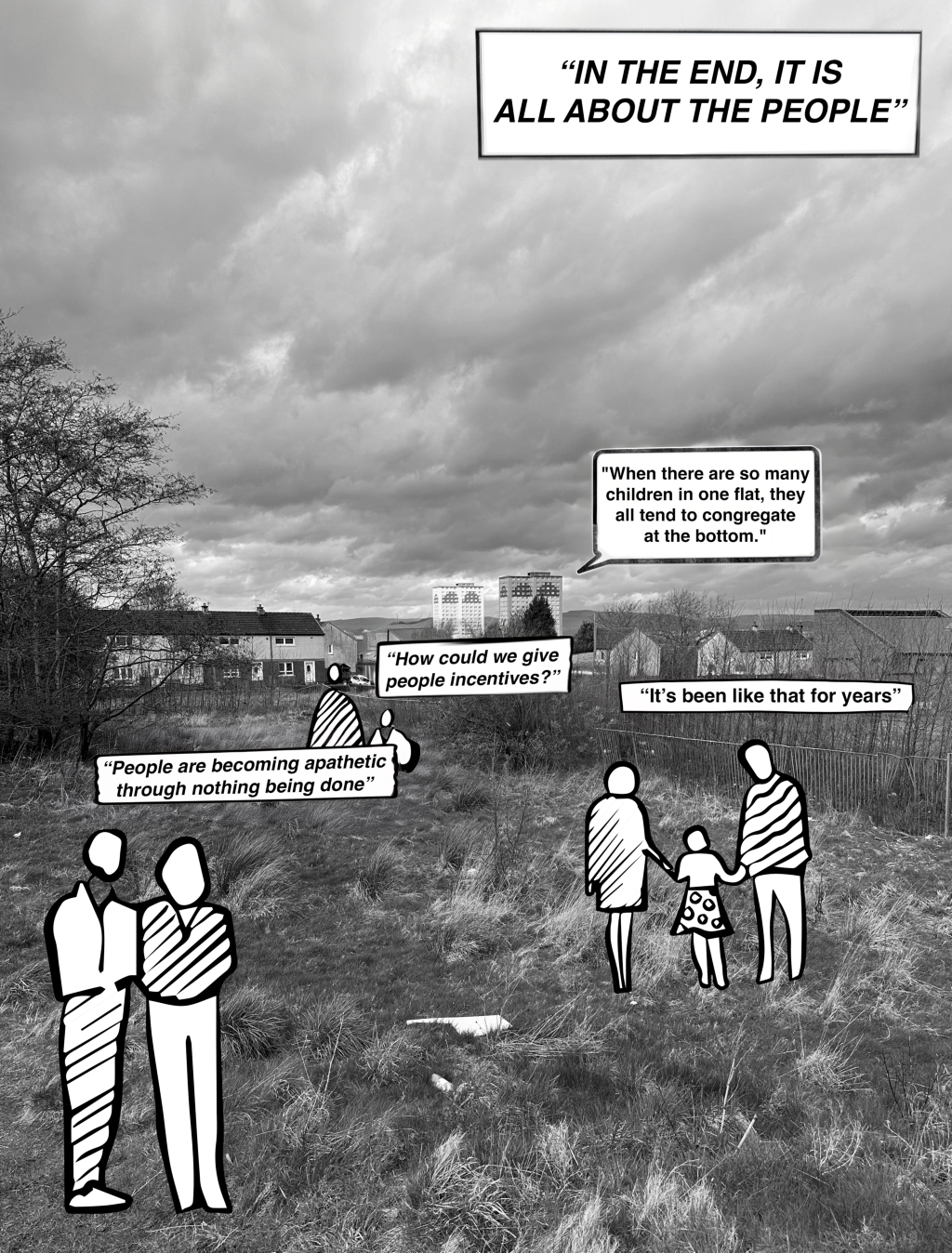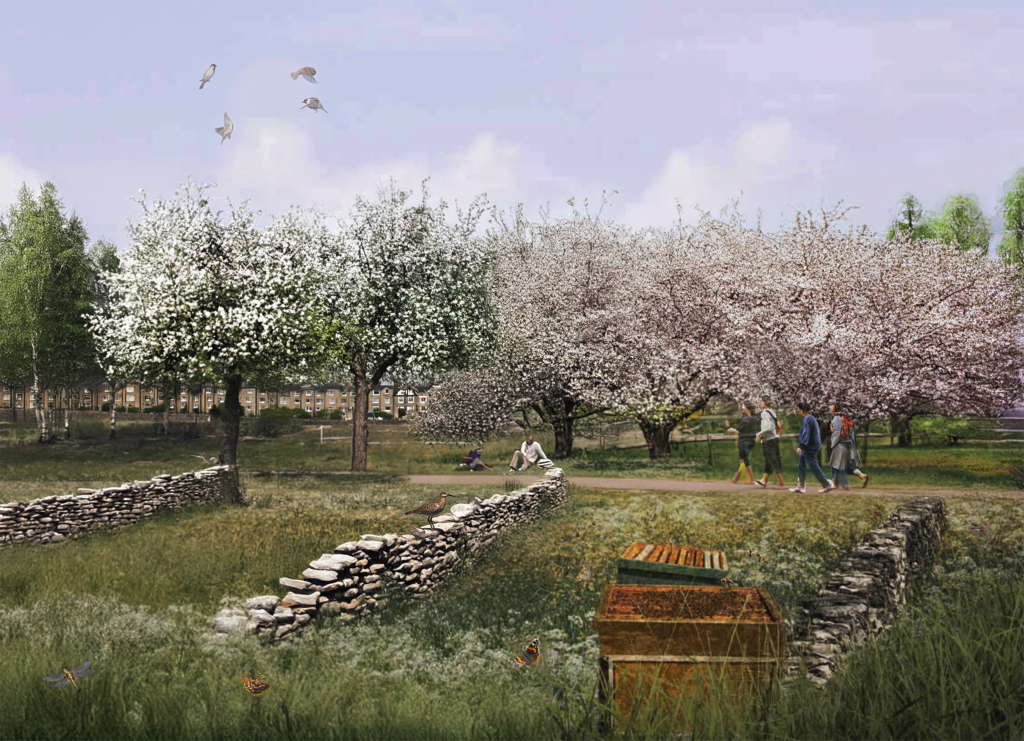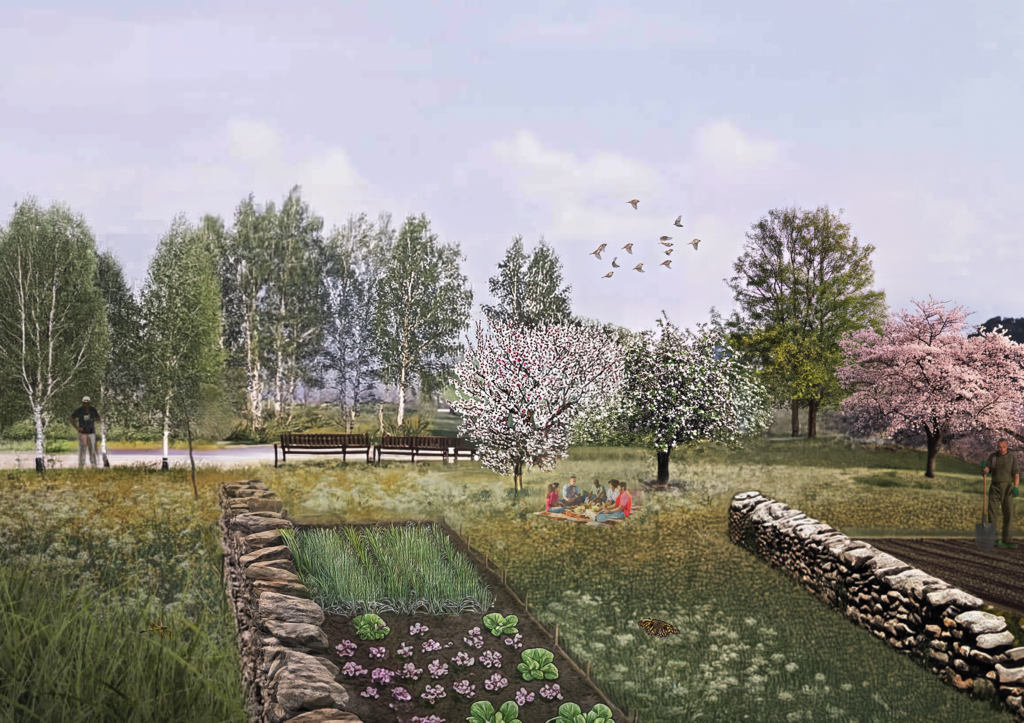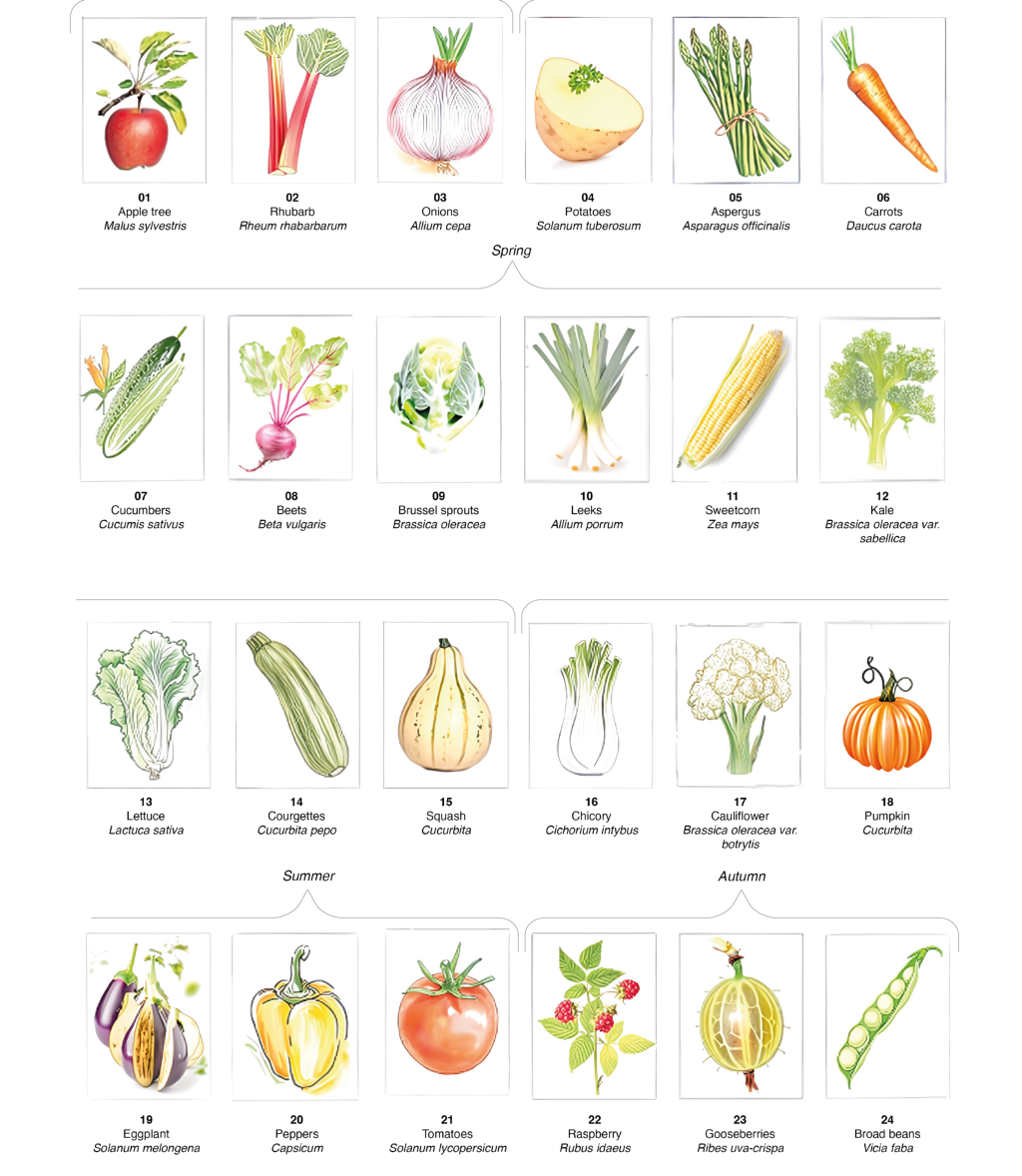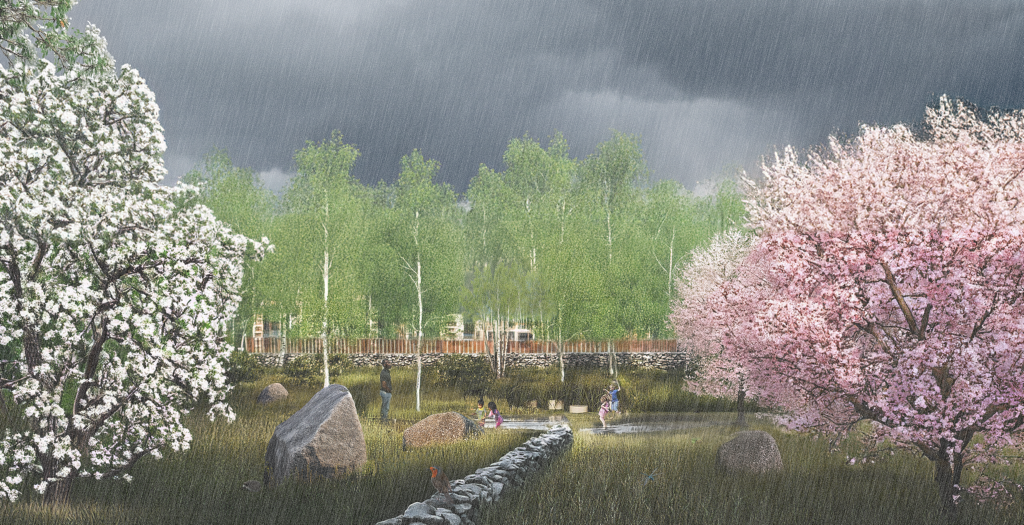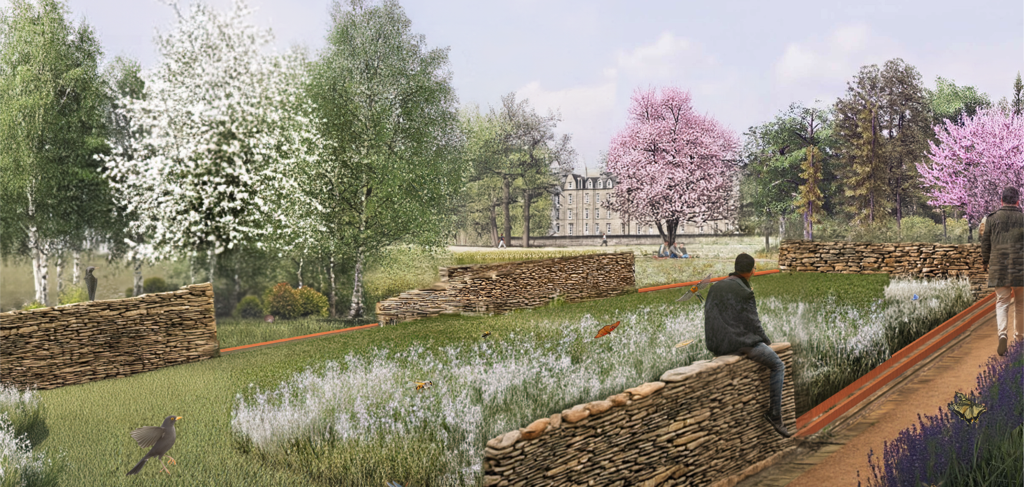Yaro Berendsen, Lenneke Vaandrager
Milton, a residential district in Glasgow, grapples with high unemployment, poor health outcomes, and social isolation. One of the key issues is that 97% of residents live within 500 metres of vacant land, much of which is enclosed with fencing or left unused. These vacant spaces contribute to the community's uncertainty about how to effect positive change. Many locals feel that Milton requires regeneration, as existing community facilities are underutilised. Residents are also keen to see Milton develop a more positive identity and reputation. However, over 60% feel powerless to tackle pressing issues such as low income, unemployment, and crime, highlighting the need for more effective solutions to these ongoing challenges.
Will planting seeds today grow a united community tomorrow?
The urban agriculture park design for Milton, Glasgow, emerged from a detailed research process aimed at revitalising underutilised land and fostering community building. Guided by fourteen design guidelines and eleven design principles, the design integrates diverse urban agricultural features, including community gardens and orchards, to promote social interaction and participation. Key elements include accessible pathways and communal spaces, like a central gathering area and a DIY zone, which encourage flexible use and personal engagement. Unique touches such as metalwork reflecting Glasgow’s industrial heritage and drystone walls inspired by Scottish landscapes enhance the park’s cultural relevance. By integrating these features, the park meets local needs and actively promotes social inclusion, making it a welcoming space where residents feel valued and connected. This approach will transform vacant land into a thriving community asset, exemplifying how urban agriculture can foster a more equal and resilient society.
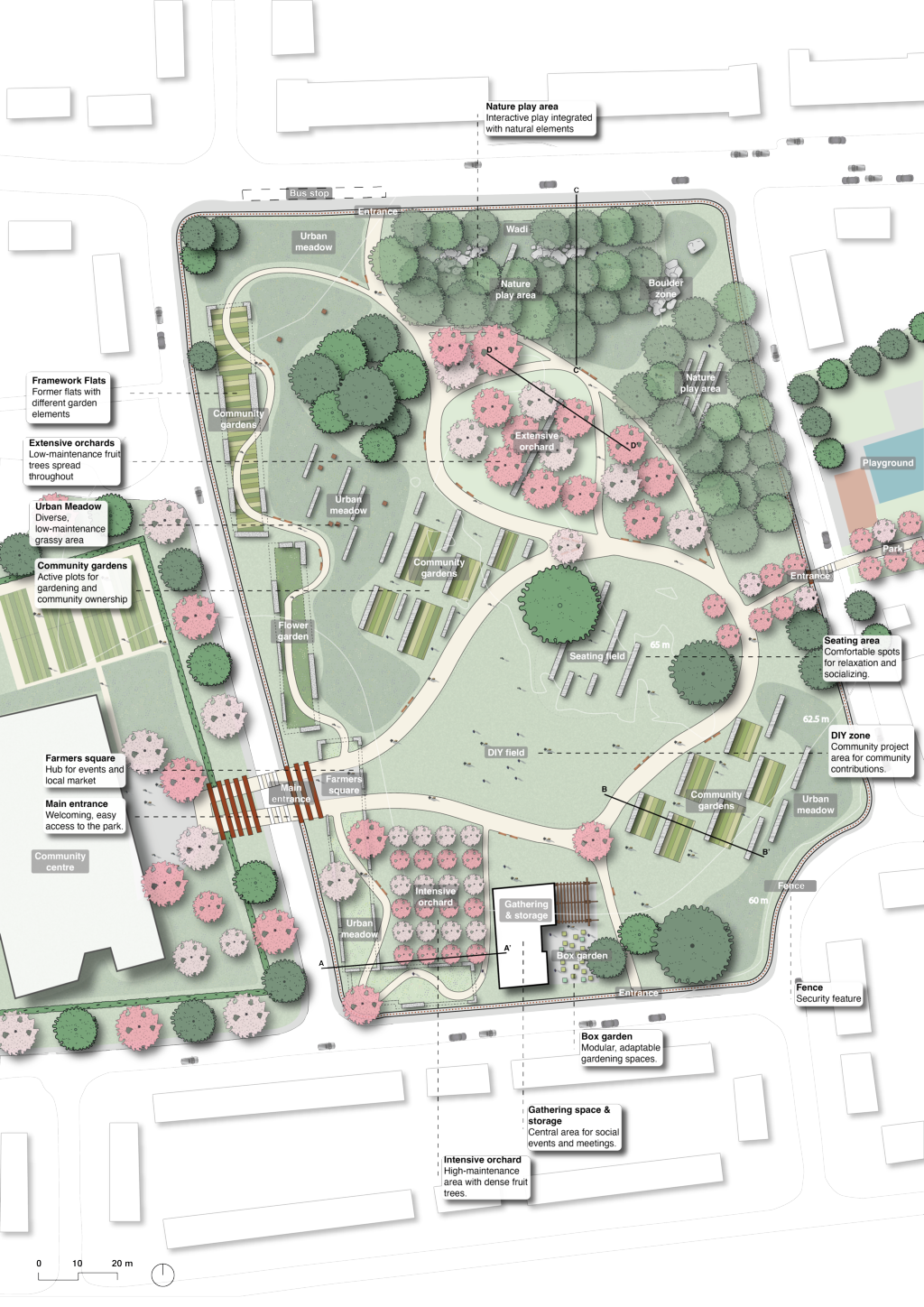
The proposed urban agriculture park in Milton offers a powerful opportunity to transform a neighbourhood struggling with social isolation and scarce green spaces. By turning vacant lots into vibrant community hubs, the park aims to boost social interaction, provide recreational areas, and support local gardening. Its design prioritises inclusivity, with features like accessible pathways and shared spaces that encourage community engagement. However, the project faces potential challenges, including possible gentrification and regulatory constraints. Balancing these issues with active community involvement will be crucial. If successful, this park could serve as a model for integrating urban agriculture into revitalization efforts, demonstrating how thoughtful design can foster community building and enhance the quality of life in neighbourhoods.





